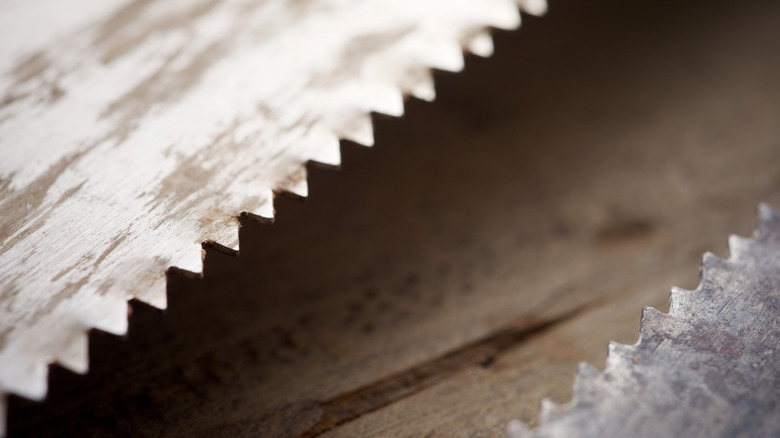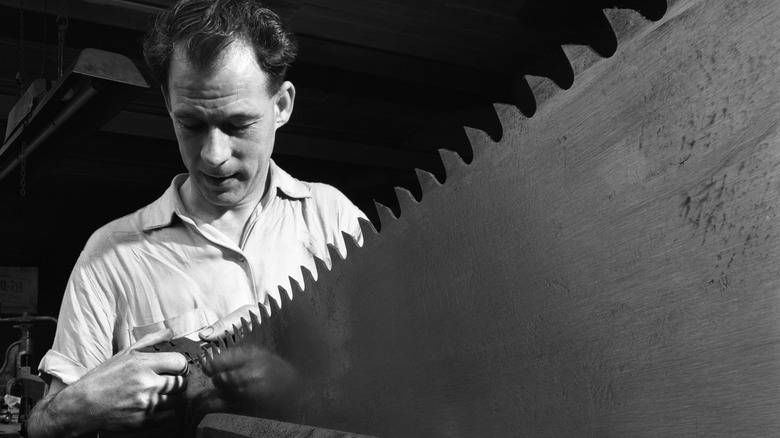Buying Saw Blades? Here's What TPI Means And Why It's Important
If you've ever browsed through saw blades online or at a hardware store, you've probably come across the term TPI. It's short for Teeth Per Inch, and may seem like something you could ignore while making a saw purchase. But on the contrary, TPI plays a huge role in how your blade cuts, how smooth the finish is, and even how long your blade will last. Whether you're cutting wood, metal, or plastic, picking the right TPI can make a clear difference between a clean, easy cut and a ruined workpiece, even in the most professional hands.
TPI simply refers to how many saw teeth are packed into each inch of the blade. While fewer teeth mean faster, rougher cuts, more teeth give you smoother, cleaner finishes, but at a slower cutting speed. Basically, it's a choice between speed and precision. The material you're working with makes a big difference, too. So before you buy a saw blade for your next camping trip or a lengthy DIY project, it's best to know what TPI really means and what number suits your work.
Understanding TPI and how it affects cutting
TPI is measured from gullet to gullet, and not from the tip of one tooth to the tip of the next. This number helps determine how aggressive the blade is and how well it handles certain materials. For example, low TPI blades are perfect for cutting soft material or when you need quick, rough cuts. On the other hand, high TPI blades are better suited for cutting down harder stuff like plywood, laminate, or sheet metal.
Many blades now come with vari-pitch teeth, which means they have a mix of TPI sizes along the blade. This helps reduce vibration, extend blade life, and offer more cutting flexibility. However, using the wrong TPI for your material can cause trouble. Using a saw with few teeth on thin metals can cause the blade to snap, while too many teeth on thick wood may clog the gullets, overheat the blade, or slow down your cut.
Picking the right blade for the job
When choosing the best saw blade, always consider what material you're cutting and how clean you want the finish. For softwoods like pine, 10–18 TPI is often ideal, offering a balance between speed and control. For hardwoods like oak, you'll want something tighter, like 18–24 TPI, to avoid chipping and achieve smoother edges. Plastics and PVC usually do best around 10–14 TPI, while metals like aluminum and brass call for 32–64 TPI for safe and clean cuts without damaging the blade or the material.
Tooth shape also matters. Flat top (FT) teeth are great for ripping through the material quickly, similar to your full chisel chainsaw. Similarly, Alternate Top Bevel (ATB) gives smooth finishes for crosscuts. Then there's Triple Chip Grind (TCG), which is perfect for tougher stuff like MDF or aluminum. And don't forget about hook angles — higher angles cut more sharply, while negative angles are best for delicate or coated materials. Matching all these factors with the right TPI yields better results and helps avoid mistakes that wear out your tools too soon.


